#altar tools
Explore tagged Tumblr posts
Text
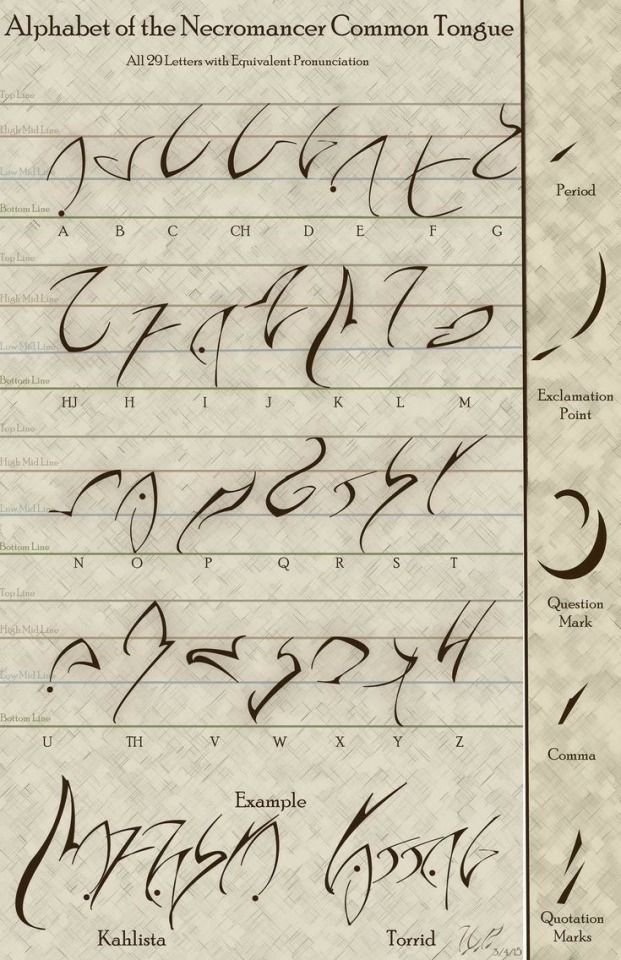
I have no idea who came up with this but thanks.
I haven’t been using it to encode writing, I’ve actually been using it with my wand during rituals. After creating a magic word I translate it into a series of “strokes” that I can then act out with my wand. It’s been pretty effective so far. I just got a beautiful wand for christmas but I’m always at a loss for what I’m actually supposed to do with it lmao, so this has been really helpful.
71 notes
·
View notes
Text
Did a little altar refresh with some offerings & it looks so good 🥺
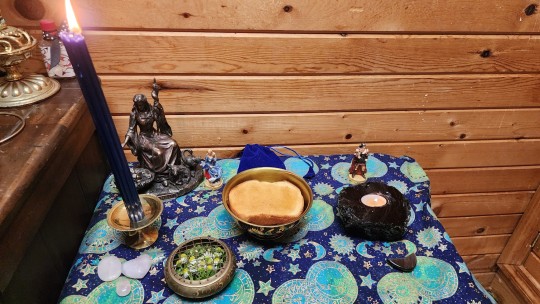
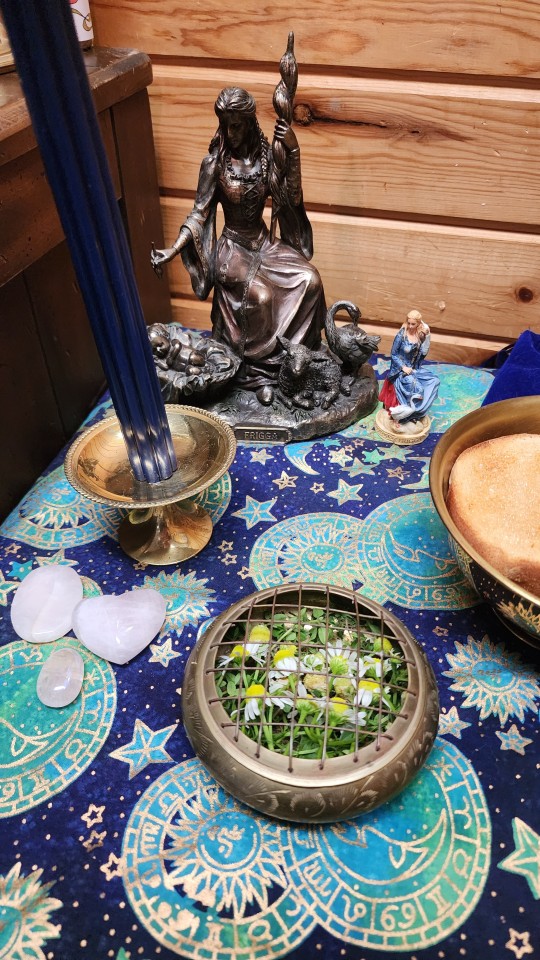
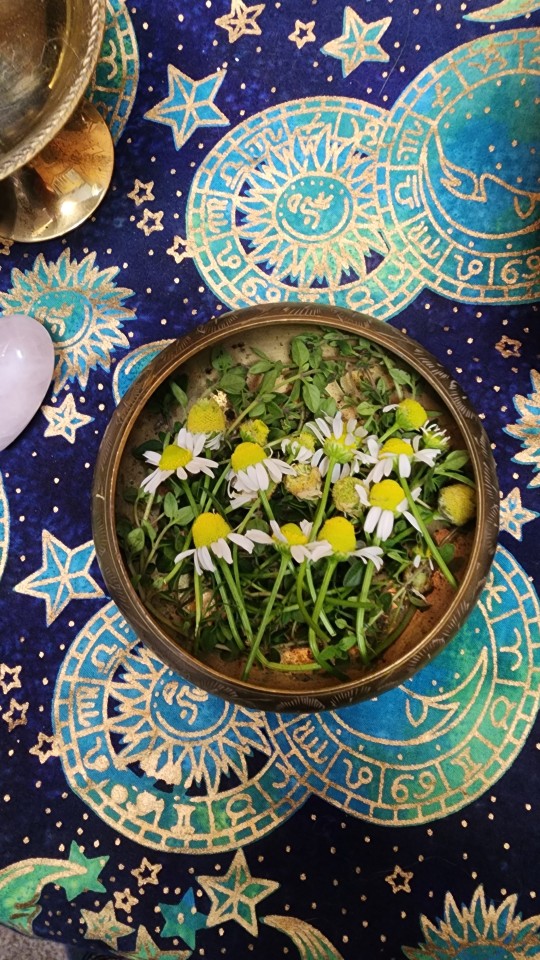


#witchblr#wiccablr#paganblr#tumblr witches#witches of tumblr#witchcore#witchcraft#witchyvibes#witch aesthetic#altar#witch altar#deity worship#offerings#Odin#Frigga#witch community#witchy stuff#witchy things#chamomile#thyme#witchlife#pagan witch#norse gods#witch#witchy#altar tools#my stuff#GreenWitchcrafts
165 notes
·
View notes
Text
My new favorite place to get a cloth for my altar is Lush. Their knot wraps always come in such unique designs and they have a variety of sizes! You can also use them for divination cloths!
28 notes
·
View notes
Text
I’ve listed an Apollo wand containing citrine!
#apollo devotion#apollo deity#apollo greek god#apollon#apollo#altar tools#witchy things#wands#hellenic devotion#hellenic worship#hellenic polythiest#hellenic deities#hellenic pagan#hellenic gods#hellenism#hellenic polytheism
20 notes
·
View notes
Text






Bottlecap Grid Charms Now Available!
These mini crystal grids are handcrafted inside metal bottlecaps using crystal points and beads, sealed with resin and made to anchor your energy. They’re pocket-sized power tools — perfect for altars, charm bags, or sacred spaces.
Price: $10 each
Bundle Deal: 3 for $25
Custom Intention Add-On: $5
Tax & shipping not included.
Each charm includes a powerful point crystal to direct energy, plus supporting stones to amplify intention. You can choose from the following sets:
---
Quartz Point Sets [Amplify]
1. Royal Vision – Quartz Point + Lapis & Amethyst
For intuition, divine insight, dream clarity, and third-eye activation.
2. Heart Alchemy – Quartz Point + Amethyst & Green Aventurine
For emotional healing, inner peace, and heart-centered transformation.
3. Voices Carry – Quartz Point + Lapis & Green Aventurine
For truth-telling, confidence, and aligned growth.
---
Citrine Point Sets [Manifest]
4. Sparky – Citrine Point + Clear Quartz
For radiant confidence, money flow, and joy-centered creation.
5. Magnetic Luck – Citrine Point + Tiger’s Eye & Green Aventurine
For grounding, prosperity, and calm action under pressure.
6. Lion Heart – Citrine Point + Tiger’s Eye & Red Jasper
For motivation, physical energy, and protective courage.
---
Want a specific intention (like protection, clarity, or love)?
Add a custom request for just $5 extra, and I’ll create or intuitively select the charm that matches your energy.
DM to claim yours!
Only limited sets available — once they’re gone, they’re gone.
#spiritual#spiritual awakening#spirituality#witchblr#spiritual journey#witchy#spiritual warfare#witches#witchcore#divine feminine#artists on tumblr#artwork#art#small artist#shop small#support small business#support#manifest your dreams#manifestation#spiritual healing#spiritual tools#ritual tools#altar tools#magic altar#magic#magical art#magical girl#witch#witchcblr#witchcraft
12 notes
·
View notes
Text
A Baby Witch's First Grimoire
Grimoire Entry 6 - 15 Tools and Their Uses in Witchcraft!

1. Athame
An athame is a ceremonial knife used in various forms of witchcraft. It typically consists of a double edged blade and a black handle. The athame is not typically used for actual cutting; it instead, is used for directing energy and symbolizing intent during rituals and ceremonies. Knives like the athame were used historically in rituals in cultures such as the Egyptians, Greeks, and Romans. The modern concept of the athame was popularized by Gerald Garden. He incorporated the athame into Wiccan practice by drawing inspiration from ceremonial magic traditions. In these traditions the athame was used to draw protective circles and direct energy. Now in our modern day we use the athame for many purposes including circle casting, directing energy, invocation and evocation, and symbolism of the elements air, fire, masculine energy, and the power of the mind and will.
2. Wand
A wand is a slender, hand held tool used in witchcraft for directing energy, casting spells, and invoking spirits of deities. Wands are commonly made from wood but can also be crafted from metals, crystals, or various other materials. It is traditionally considered sacred and powerful when used as a tool. Like the athame the wand also has historical ties to the Egyptians, Greeks, and Romans. In these cultures, wands were symbols of authority and power. They were used by priests, magicians, and oracles to channel divine energy and perform rituals. The want is also a common staple of folklore and mythology as they often are depicted as a tool wielded by witches, wizards, and fairies. This tool, again like the athame, was popularized in Wicca by Gerald Gardner. He drew inspiration from ceremonial magic and folklore. It's uses are for directing energy, casting circles, invocation and evocation, healing, channeling intent, and symbolizes air, fire, and the power of the mind.
3. Chalice
The chalice is a cup used in various religious practices involving witchcraft. It's typically made from metals, glasses, ceramic, or wood. The chalice represents the element of water and is a symbol of the Goddess, the feminine aspect of divinity, and the womb. The chalice has been used historically in rituals dating back to ancient times. In many cultures, the chalice has been a symbol of abundance, fertility, and the divine feminine. The chalice is often used to hold offerings and ritual drinks. It's so commonly used that even Christianity uses it to represent the blood of Christ. Today the chalice is often used for ritual beverages, such as water, wine, or juices, offerings, blessings, invocation, and symbolizes water, femininity, the womb, fertility, abundance, and the divine feminine.
4. Pentacle
Not to be confused with the sigil of Baphomet, the pentacle is a disk or flat object inscribed with a pentagram, which is a five pointed star pointing upright, enclosed within a circle. In witchcraft the pentacle is a powerful symbol that represents the elements. The pentacle has ancient roots, with the pentagram symbol being used in various different cultures and religions for thousands of years. Ancient civilizations, such as ancient Mesopotamia, Egypt, Greece, among others, used the pentagram for its protective and symbolic properties. In the context of western religious and ceremonial magic, the pentacle boomed in popularity and became a prominent tool and symbol. This happened especially during the renaissance and the development of modern occult traditions thereafter. Today the pentacle is used as an altar tool as a focal point representing the element of earth and the foundation of magical practice. It's also used for protection, consecration, invocation and evocation, spell work, and symbolizes the elements of earth, air, fire, water, and spirit. It is the interconnectedness of all things and a very powerful tool because of it.
5. Cauldron
A cauldron is a large pot, typically made of cast iron, used in cooking and rituals. It's a versatile tool associated with transformation, rebirth, and the element of water. The cauldron can also symbolize the womb of the goddess, representing fertility. The cauldron has ancient roots and has been used across various cultures for cooking, brewing, and other various rituals. In Celtic mythology, the cauldron is a powerful symbol of abundance, knowledge, and transformation. For example, the Cauldron of Dagda in Irish mythology was said to provide endless nourishment. The Cauldron of Cerridwen in Welsh mythology, was a source of wisdom and rebirth. In medieval Europe, the cauldron became associated with witches and magic. It was often depicted in folklore and literature as a vessel for brewing potions and casting spells. This association has continued into the modern day and the cauldron remains a symbol of witchcraft. It's used for scrying, burning rituals, cooking, transformation rituals, and symbolizes the womb of the goddess, water, and the cycles of birth, death, and rebirth.
6. Broom
The broom, also commonly referred to as a besom in witchcraft, is a traditional tool used for sweeping and cleansing. It serves as a functional and symbolic object and is usually made from natural materials, such as wooden handles and twigs or straw for the bristles. Historically it was used by woman when cleaning homes. In medieval Europe woman were often practitioners of folk magic. The image of witches flying on broomsticks became popular in European folklore and later in literature and art. This is theorized to have origins in shamanic practices, where tools like brooms were used symbolically in rituals involving altered states of mind. Today it's used for cleansing and purification, ritual preparation, protection, fertility rituals, and symbolizes air, magical cleaning, and the union of masculine and feminine energies.
7. Book of Shadows
A Book of Shadows (BoS), also known as a grimoire, is a collection of magical knowledge, experiences, rituals, spells, and other relevant information stored in a book, journal, blog, or other means. While the term is usually interchangeable, some traditions distinguish between the two. These traditions usually consider a grimoire as more of a spellbook or manual while a Book of Shadows (BoS) is considered a personal diary of magical practice. The concept of recording magical knowledge dates back to ancient times. Grimoires have been found throughout history in various cultures, containing information on magical practices, spells, rituals, and divination. In medieval Europe, grimoires were often handwritten manuscripts passed down through generations or kept secret to protect the knowledge within. Today the Book of Shadows (BoS) is used to record spells and rituals, track progress of the practitioners growth, contains notes from research and study, shares personal reflections of experiences, dreams, and insights gained through magical practice, preserve tradition, and is a method of creative expression.
8. Candles
In witchcraft and other magical practices, candles are used for their symbolic and practical properties. The color, size, and type of candle can influence its effectiveness and purpose in rituals and spells. The use of candles dates back thousands of years. Ancient civilizations such as the Egyptians, Romans, and Chinese used candles made from beeswax, tallow (animal fat), or plant based waxes. Early candles were primarily used for illumination and were often crafted in a labor intensive process. In magical and religious contexts, candles have been used for centuries as symbols of light, purification, and spiritual illumination. In many traditions, candles have been incorporated into rituals and spellwork due to their symbolic representation of the element of fire and the energy of transformation. Today's uses of candles include focus and intention, color correspondences, ritual and spellwork, meditation and contemplation, celebrations and ceremonies, and symbolize fire, transformation, energy, and purification.
9. Incense
Incense is a substance that releases fragrant smoke when burned. It's typically made from a blend of aromatic plant materials, resins, oils, and sometimes other stuff. Incense comes in various forms, including sticks, cones, powders, and coins. In witchcraft and other spiritual practices, incense is used for its aromatic properties and its association with purification, ritual and energy work. Incense has been used for thousands of years across various cultures for religious, spiritual, and therapeutic purposes. The ancient Egyptians, Greeks, Romans, and Chinese all utilized incense in their rituals and ceremonies. In many cultures, burning incense was, and still is, believed to bring people closer to the divine, purify spaces, and ward of negative energies. In ancient Egypt, incense was used in temple offerings and daily rituals. The Greeks and Romans used it in their religious practices and medicinal treatments. In India and China, incense has been integral to spiritual and meditative practices for centuries. The use of incense in these traditions often involved complex blends of resins, herbs, and oils tailored to specific purposes. Today's uses for incense include purification, rituals and ceremonies, meditation and contemplation, invocation, spellwork, and energy work.
10. Deity Statues
Deity statues are sculptural representations of divine beings or spirits used in various religious practices. These statues can be made from various materials, such as wood, stone, metal, or clay, and they often depict gods, goddesses, or other significant figures from mythology or religious traditions. In witchcraft, deity statues are used to represent and connect with specific deities or spiritual entities. They have been used across a variety of cultures for thousands of years. Ancient civilizations, including but not limited to, the Egyptians, Greeks, Romans, Hindus, and Buddhists, created statues to honor and invoke their deities. These statues served as focal points for worship, rituals, and offerings. In ancient Egypt, statues of gods and goddesses were placed in temples and homes, and offerings were made to them as part of daily religious practices. In Greece and Rome, statues of gods were central to worship in temples and public spaces. Similarly, in Hinduism and Buddhism, deities are often depicted in elaborate statues that play a significant role in devotional practices. In modern witchcraft, deity statues are used to honor and work with specific deities, align with spiritual practice with divine energies, and create sacred spaces. They are used for representation, invocation, meditation, altar decoration, used for offerings and devotion, and symbolic connection.
11. Crystals
Crystals come in various types, including quartz, amethyst, rose quartz, and many others. In spiritual and magical practices, crystals are valued for their alleged energetic properties and their ability to influence or enhance various aspects of life and magic. The use of crystals dates back to ancient civilizations. Many cultures have used crystals for their perceived magical and healing properties. In Ancient Egypt, crystals such as lapis, turquoise, and carnelian were used in amulets, jewelry, and burial artifacts. They were believed to offer protection and bring about divine favor. Ancient Greece and Rome used various crystals in jewelry and talismans. They believed that crystals had healing and protective qualities. Ancient China used crystals as medicine to balance energy and treat various ailments. Historically Crystals were used in Hinduism and Buddhism to enhance energy and focus. In today's modern age, crystals have gained popularity in various new aged practices where they are used for their healing properties and their role in energy work. Some of the modern uses include healing, energy work, protection, manifestation, cleansing, purification, and divination.
12. Herbs
In witchcraft, herbs are valued for their specific energies and attributes, which are believed to enhance rituals, spells, and healing practices. Herbs can be used in various forms, including fresh, dried, powdered, or in essential oil form. Historically herbs were used for various purposes for various cultures. Ancient Egypt used herbs in medicine, rituals, and embalming practices. Plants like frankincense and myrrh were highly prized for their spiritual and healing properties. Ancient Greece and Rome used herbs in both medical and magical practices. Greek physicians like Hippocrates and Galen wrote extensively on the use of herbs for health. In ancient China herbs were used in medicine for thousands of years to balance the body's energy and treat ailments. A variety of indigenous cultures around the world have also used herbs for healing practices, rituals, and daily life, often incorporating them into traditional medicine and ceremonies. Today we use them for many reasons including holistic medicine, culinary arts, and witchcraft. In witchcraft they are used for spells, rituals, herbal baths, incense and smudging, healing, amulets and charms, meditation, and dream work.
13. Bells
Bells have a long history across many cultures and have been used for various purposes. Bells have been found in ancient civilizations, such as in China and Mesopotamia, where they were used in rituals, ceremonies, and as signaling devices. In Buddhism, bells are used in temples and monasteries to signal meditation times and to aid in ritual practices. In Christianity, church bells have historically called people to worship and marked hours of the day. In European folk traditions, bells were often used in rituals to ward off evil spirits and protect against evil forces. They were also used in celebrations and seasonal festivals. In modern times bells are used for cleansing, purification, marking rituals and spells, energy clearing, focus, intention, invoking or honoring deities, and divination.
14. Altar Cloth
Altar clothes are pieces of fabric used to cover and decorate altars. It can be made from various materials including silk, cotton, velvet, or other fabrics and often features symbolic designs, colors, or patterns relevant to the practitioners beliefs or the specific ritual. The use of altar cloths dates back to ancient religious and spiritual practices among a variety of cultures. In many ancient religious traditions altars were often covered with cloths as a sign of respect and to beautify the sacred space. This practice can be seen in ancient Egyptian, Greek, and Roman temples. In Christian traditions, altar cloths are used to cover the altar in churches. These cloths often feature religious symbols and are used to make religious occasions. In various pagan and folk traditions, altar cloths have been used to signify the altar's sacred nature and to protect it from mundane influences. Today altar clothes are used for both practical and symbolic reasons. These range from creating a sacred space, use for protection, focus, intention, organization, and symbolize different meanings dependent on the color. For example a green cloth may be used during prosperity spells, while a black cloth might be used for protection or banishing.
15. Mortar and Pestle
Mortar and pestles are tools used to crush, grind, and mix substances. The mortar is a bowl, typically made of stone, ceramic, or wood, and the pestle is a heavy, club shaped object used to grind and crush the materials inside the mortar. This tool is widely used in cooking, pharmacies, and various craft and medicinal practices. The mortar and pestle have a long history and has been used across many cultures. Early examples of mortar and pestles have been found in the archaeological remains of the Indus Valley, Egypt, and Mesopotamia. In ancient Greece and Rome the mortar and pestle was an essential tool for pharmacists and used to prepare medicines. Today mortar and pestles are valued for their ability to transform raw ingredients into fine powders and mixes, making it an essential tool for preparing herbal blends, incense, and other magical concoctions. They are used for symbolic acts, herbal preparations, incense making, to prepare spell ingredients, and in making anointing oils.
Feel free to check out my master post for more information!
#magick#paganism#wicca#witchblr#witchcraft#baby witch#witch stuff#pagan#witch#witch community#beginner witch#witches#witchcore#witch aesthetic#altar tools#athame#witches cauldron#candles#magical#pagan witch#eclectic pagan#paganblr#wands#pentacles#pentagram#broom#book of shadows#grimoire#incense#A Baby Witch's First Grimoire
27 notes
·
View notes
Text
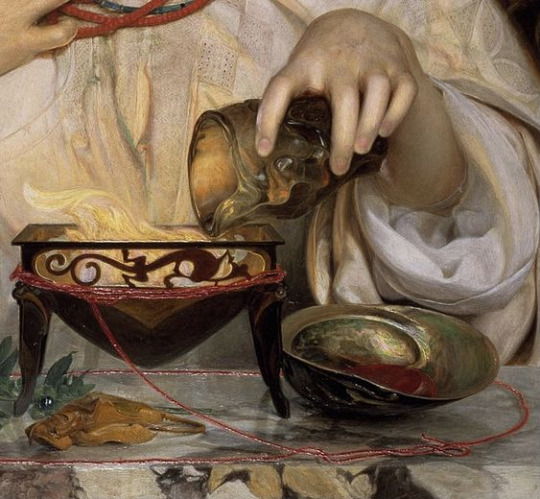
“Medea” - detail
115 notes
·
View notes
Text
Rose Quartz Candlestick Holder

https://amzn.to/42yCmBI
The Candle Holders are each naturally Handcrafted from natural rose quartz rocks with aluminum cup.
#candle holder#rose quartz#altar decor#altar tools#paganism#commissionsearned#home decor#affiliate#helenic polytheism#hellenic pagan#hellenic polytheism#hellenic deities#hellenic worship#hellenic paganism#witchcraft supplies#pagan witch#witchcore#witch community#witchcraft
8 notes
·
View notes
Text
。+*✧ 5 Witchy Ways To Make Your Home More Magickal ✧*+。
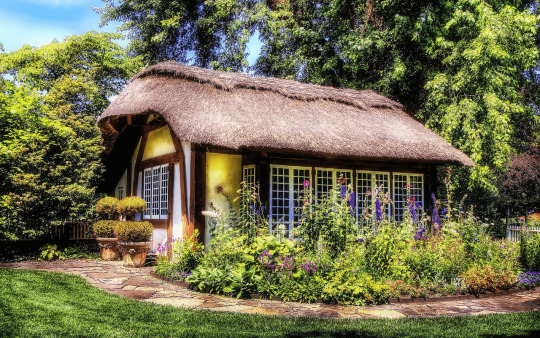
This is an article from my website, The Witchy Housewife. You can read it at the source here or look under the cut to read it here on Tumblr. If you enjoy my work, please consider subscribing (at the bottom of this page) to receive articles as they're posted via e-mail, exploring the shop, leaving a tip, or reblogging this post. I run this all myself, so all support is greatly appreciated. 💜🔮✨
Most practicing witches, whether just starting out or involved for decades, have carved out a sacred space for themselves. It is rare, however, that I see that same level of attention given to the rest of the home. In doing so, we risk the stagnation of energies in just about every other room of the house and miss out on this beautiful flow dancing about room to room. Today, I would like to share five simple ways to make your entire home a more magickal place to live in.
1. Regularly cleanse, bless, and ward.
It is so important – both for the success of workings and the overall energetic wellbeing of the household – to have a regular routine of cleansing the home, refilling it with positive energies, and charging the wards that surround it. This habit breaks up energetic stagnation, deters lingering negative energies, and promotes a sacred feeling of warmth that permeates throughout the entire home. In addition, I think you will find that this sort of energetic housekeeping will improve the results of any future magickal workings performed within it. Not to mention, making a habit out of any sort of magickal working – cleansings included – will naturally “exercise” and improve your own magickal abilities overall.
For those new to the ideas of cleansing, blessing, and warding, this is how I generally define it: To cleanse is to rid a person, place, or thing (in this case, the home) of stagnant, unwanted, draining, counterproductive, or otherwise negative energies. After a cleansing is performed, a blessing may follow. In my opinion, blessing a space with more productive energies serves two purposes: To set the tone for desired future outcomes and to further deter negative energies from re-entering the space. With that said, to bless – again, as I define it – is to invite in and refill the recently-cleansed person, place, or thing with fresh, positive, intentional energies. And finally, to ward is to create an energetic protective barrier around the person, place, or thing as a more passive and longer-lasting preventative measure. Some people may also refer to this as bubbling or shielding, though different people may have different definitions for each.
Now personally, there are different cleansing rituals I use for different circumstances, but my most often used rituals take place monthly or as-needed when energies get too muddied.
My Monthly Cleansing Ritual: I perform this ritual on the first of each month. Any cleansing tools to be charged on the altar should be set at least a day before performing the cleansing. The morning of, weather permitting, open windows and play uplifting music or cleansing affirmations, frequencies, or subliminals of choice. Take a cleansing shower. Clean the home as you normally would. When physical cleaning is complete, use a smoke or spray cleansing blend of choice, walking with intention from room-to-room. Pay special mind to corners and doorways. I like to use sound cleansing – bells, drums, or even snapping your fingers will do – in these spaces to really ensure the breaking up of any “stuck” energies. If you are someone who performs banishing rituals, you may choose to do so now. At this point, I also take a moment to cleanse myself, particularly as an empath. I then tend to my wards by first taking a blessed salt blend around the perimeter of the property, followed by sitting at the center of the property and funneling my own energy into the ward. If you would prefer to instead bless first and ward after, feel free to do so. It is your ritual, after all. Regardless of which order you perform the ritual in, the blessing process may be a deeply personal one, so this is a step I suggest thinking on a bit rather than following to the letter. In my ritual, I use a spray with positive energy-promoting herbs (as well as herbs that may promote the intention I wish to set for the month) and follow up with prayer to my deities. If you’re interested in a more in-depth look at my Monthly Cleansing Ritual, I do have detailed instructions available on my Monthly Blessings Patreon.
My As-Needed Cleansing Ritual: This is essentially a truncated version of my monthly ritual. If the energies are something I’ve tracked in or absorbed too much of, I will take a cleansing shower first. Following this, perform your usual smoke or spray cleansing, focusing especially on any room(s) that may be the most abundant in the energy that brought about this need for an emergency cleanse. You may also like to perform a shorter version of your regular blessing ritual. Unless the situation is really dire, I will generally stick to my spray in this case.
In regards to the physical cleaning portion of this, I do have to recommend Grove Collaborative for cultivating a more natural-based cleaning cabinet. In the future, I’ll be looking into more do-it-yourself methods for cleaning essentials, as is part of the focus of this blog, but in the meantime – and for anything that may be too tedious to make – I really do love Grove.
And one final thought on the cleansing process before we move on: If nothing else, it would at least be worth it to regularly cleanse yourself. I’m afraid your floors (and your home overall) will never be clean if you are consistently tracking in the (energetic) mud.
2. Arrange altars around the home.
To some, an altar may just be some simple magickal workspace, but I tend to view an altar as a sort of energetic nexus – a point of focus in (or out of) the home enchanted with a specific intention. Having a variety of these energetic points all across the home can promote different energies in different places and act as a sort of battery for the mood you wish to set in any room you wish to set it. Here are just a few ideas for altars around your home:
• The Shrine Altar: A space dressed with statuary, artwork, trinkets, and offerings honoring the deity or deities you are devoted to in your practice. This is your place of divine worship.
• The Working Altar: A space with all the tools and dressings to make magick happen. This, combined with a Shrine, is what most people traditionally think of when referring to an altar.
• The Divination Altar: A space with all the tools and dressings for divination, spirit communication, and other sorts of communion that take place beyond the veil. You may wish to set aside a space here for your spirit guides and teachers to provide their own guidance.
• The Ancestor Altar: A space for maintaining connection with your ancestors. When decorating and leaving offerings, keep in mind the things that your ancestors would enjoy.
• The Protection Altar: A space for gathering protective energies to keep yourself, your loved ones, and your home safe from harm. Think of it as a battery specifically for your wards.
• The Hearth Altar: A space for inviting warm, positive energies into the home and transmuting any negative energies that may enter. Even better if you can get your family involved.
• The Prosperity Altar: A space for inviting wealth, prosperity, and abundance into the home. Similarly to the Hearth Altar, It’s a good idea to have this altar face the front door to act as a “greeter” to these energies, and you may even choose to combine them.
• The Creativity Altar: A space for encouraging a steady flow of inspiration. This is ideal if you have any sort of creative pursuits and/or are subject to frequent creative blockages.
• The Study Altar: A space for encouraging focus and memory retention. Perfect for a library or an office where lots of learning takes place. Rosemary would be an excellent addition here.
• The Garden Altar: A space in your garden for promoting the growth of your plants and bonding with the fae and genius loci native to your area.
3. Celebrate with the changing seasons.
When I was younger, much of the year was quite boring to me, and I found myself always pining for Hallowthanksmas to roll back around before returning yet again to “business as usual” come January 1st. I think an unfortunate amount of people operate this way, as well. It was only when I started observing and appreciating the year in full that my life turned around in a big way, and I began to realize there is always something to look forward to.
Whether this means celebrating the sabbats, the seasonal shifts, or your own set of scattered observations – you can make holiday magick a year-round experience just by opening your eyes to Gaia’s natural cycles. In addition, I think you’ll find that matching the energetic ebb and flow of the Earth will serve to optimize your success with spellwork overall. Very simply:
During the spring… New beginnings are abundant. Appreciate the budding flowers, the baby animals, and the fresh spring air. Start new projects and/or take on new endeavors.
During the summer… Passions are at their highest. Host bonfires and barbecues and let yourself live life. Soak up the energy of the sun and transmute it into raw motivation.
During the autumn… Our efforts may be harvested. Bathe in gratitude for the abundance of this beautiful planet. Review and appreciate all that you have done for yourself.
During the winter… The world is at rest. The cold decelerates the very flow of time. Take a much-needed break, and plan to return or renew come the first signs of spring.
Consider also bringing the outdoors in – particularly during the colder months when it is too difficult to spend a significant amount of time outside. Foraging with the local flora in your area and using your findings for food, medicine, and decor is an excellent way to become familiar with the cycle of the seasons as it functions in your very own neighborhood.
4. Ritualize your everyday routines.
We often don’t realize just how many rituals we perform each and every day – repetitive, but necessary, processes that lull us into a meditative state. There is opportunity here. In our day-to-day life, there are so many little pockets within our routines to tuck intention and purpose into. And why shouldn’t we? Here are just a few suggestions for enchanting your daily routine:
In the Morning: Do affirmation work upon waking or in the mirror. Alternatively, listen to affirmations or subliminal audio on your ride to work or while getting ready in the morning. Incorporate color and shape magick into your wardrobe – including any accessories, makeup, or nail care that you may do.
Throughout the Day: Enhance your meals with carefully chosen herbs to improve wellbeing or attract specific energies. After workouts, take a moment to meditate on advancing muscular growth or expelling fat from troublesome areas. Use showers as mini cleansing rituals or put oils/herbs in a bath to attract energies.
During the Night: Do affirmation work just before falling asleep. Keep a small (non-fragile) stone under your pillow to regularly fill with energies of gratitude. Set an intention for your dreams. Keep a dream sachet under your pillow to help with achieving lucidity. Diffuse oil for a specific intention to set the tone for your dreams or even to set the tone for the next day.
However you spend your days, consider altering your home’s decor room-by-room to cultivate a specific tone and energy depending on the daily rituals you perform there.
5. Build a garden you can bond with.
One of the things I love most about being a witch is the awareness that magick really is all around us. In my opinion, cultivating a garden is the best way to go about experiencing this, and it offers so much versatility. On a very basic level, a garden offers a wide variety of personally-selected plants that can be used for cooking, medicine, magick, decor, aroma, and so much more. On a deeper level, a garden offers the space to get to know the spirits of these plants as they thrive and flourish prior to receiving their gifts – and this, in turn, will improve upon many of your more subtle spiritual abilities.
And for those of you who don’t have much of a yard to work with at this time, keep in mind that plants in any pot – that require any amount of sun and attention – are still living beings. Lavender, for example, is one commonly-used plant in the craft that can be grown indoors.
Pinterest, for the record, is a great place to collect gardening information tailored to your tastes (among other things like recipes and crafting tutorials). And for the more daring, you may choose to expand your horizons by looking into things like food forests or guerrilla gardening (bonus points if it yields something edible).
Regardless of what endeavors you decide to take on, darling, I wish you the best of luck in making your home, your community, and your life more magickal. Many blessings to you.
#witch tips#witchcraft#witchblr#witchy#wicca#the witchy housewife#my content#my articles#spells#spellwork#spellcraft#ritual#magick#pagan#paganblr#hellenic pagan#hellenic polytheism#altar#altar decor#altar tools#altar ideas
16 notes
·
View notes
Text
Finally reorganized my altar after so long. It’s 10000x more functional now :))
#witchcraft#magick#occultism#pagan#paganism#witch community#demonology#witch aesthetic#witchblr#grimoire#lucifer devotee#luciferian#deitywork#deity worship#deity witchcraft#altar tour#altar tools#altar#spellcraft#spell work#spells
83 notes
·
View notes
Text
It's been a while since I've shared my altar all cleaned up~♡
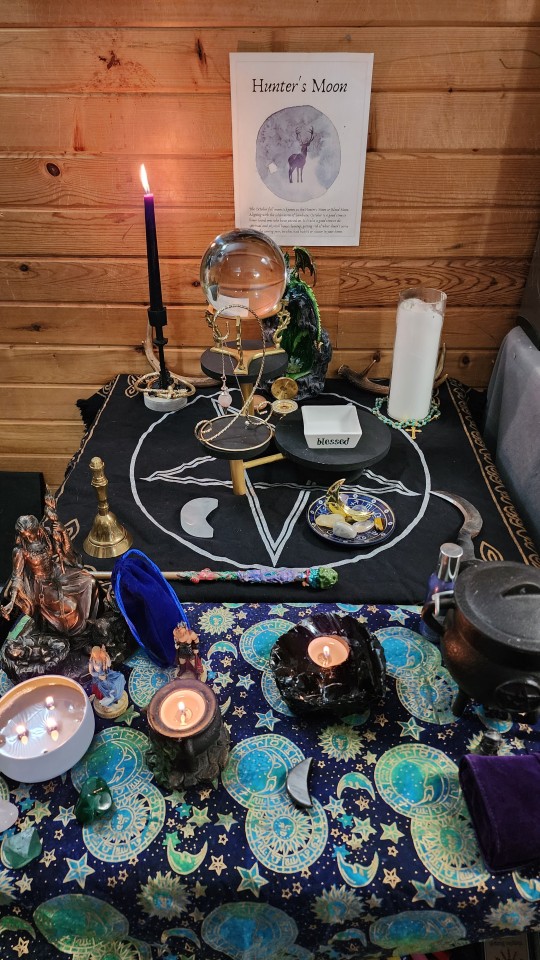



#witchblr#wiccablr#paganblr#witch#witch aesthetic#witchcore#altar space#witch altar#altar setup#witch community#witch society#witchcraft#frigga#odin#altar tools#pagan witch#norse paganism#norse pantheon#green witch#hunter’s moon#witchyvibes#all witches#witches of tumblr#tumblr witch#witch tumblr#witch stuff#witchy woman#witchy things#witchy vibes#divination tools
107 notes
·
View notes
Text


Morning dear hearts! 💚 New witch brooms will be available at the end of the week, Friday the 25th! This is the final one from October's batch and whoever snags it will receive a surprise bonus item ✨
Adored with:
• Unakite for grounding, releasing negative energy, spiritual growth and can enhance insight and clarity during meditation.
• Locally sourced roses and baby's breath.
Shop | Patreon
#my posts#witchblr#witch community#cottage witch#hearth witchcraft#hearth witch#kitchen witchcraft#kitchen magic#witch altar#altars#altar tools#witchy things#witch shop
11 notes
·
View notes
Text

I'm back! I have missed you all. The shop is reopened with some new designs. You can find the shop HERE AT Yourmajestyswill.com
I am in the middle of writing my debut novel (Releasing in December 2024), so I am using wands to fund my projects. If you are interested in a custom design, that will be on the website soon but feel free to send me a dm.
#harry potter#wands#invictus arcana#fantasy art#cosplay oc#tiktok cosplay#gryffindor#hufflepuff#ravenclaw#altar tools#altar wand#magick#witchcraft#witchcore#witchy
7 notes
·
View notes
Text


Trying out a new thing! I've wanted to make sheaths for the bollines for years and convenient my girlfriend got me a set of leatherworking tools for Christmas and today we went to the leather store and picked up a few things. I already know how I would change things for the next ones but now my personal bolline has a sheath after being in use for twenty years. I think I'll try making a few more in slightly thicker leather, and with dyes and such obviously, and see how they do in the Etsy shop, perhaps.
#leatherwork#Leatherworking#Wicca#Ritual tools#Bolline#Boleen#white handled knife#Ceremonial magic#Altar tools#Witchcraft#Pagan#male witch
10 notes
·
View notes
Text
Things writing about the Goetia others have difficulty with.
Lilith is a goddess and not in the Goetia. She is also a demon, vampire, and the first women. She married and slepted with about every other demon ever mentioned. Goddess of non jealous Polyamoury!
Lucifer is not in the Goetia. He and Lilith were listed as married in the 14th century. Angel, God, spirit, but not a demon, but rules them as superior spirit.
Bael, Baal , Belphur, BaelZebub, BaelZebub is all the essence of the same spirit from different times in history. Now they are being called the Queen Bee thanks to Helluva Boss cartoon.
The seven deadly sins do not correspond to the seven demon prince's of hell! Stolas is far to gentle for a deadly sin! Lucifer being in charge of Pride is a angel and God while King Asmodi is in charge of Lust!
#witchcraft#pagan#halloween#wicca#gothic#love sex magic#magic#goddess#lilith#altar tools#Lucifer#stolas goetia#helluva boss asmodeus#baal
43 notes
·
View notes
Photo



(via Resin Trinket Jar Aquamarine Color and Glitter With Gold Eye - Etsy Italy)
#trinket jar#resin jar#resin box#epoxy resin#witchy#aquamarine#tiffany#etsyshop#etsyfinds#etsystore#etsyseller#wiccan box#altar tools
2 notes
·
View notes